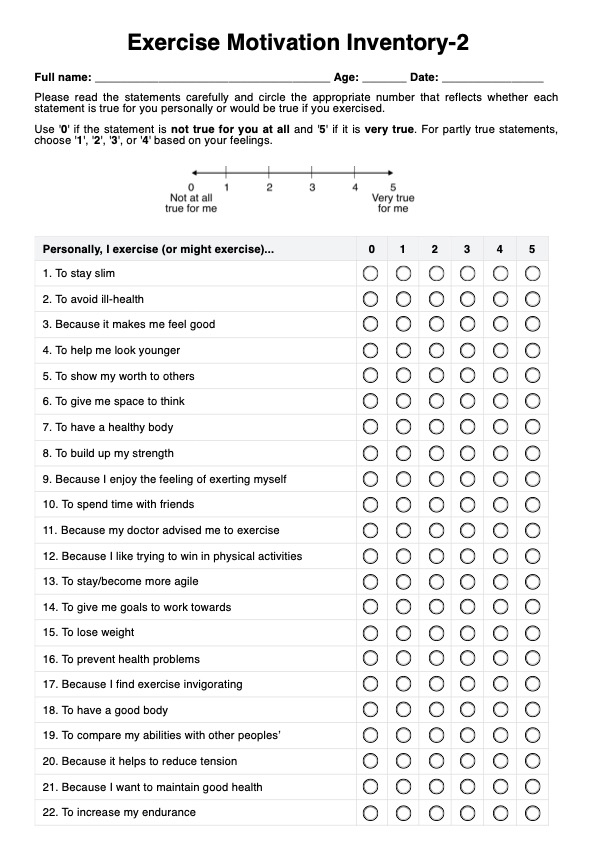The 14 subscales of the EMI-2 are stress management, revitalization, enjoyment, challenge, social recognition, affiliation, competition, health pressures, ill-health avoidance, positive health, weight management, appearance, strength and endurance, and nimbleness.

Exercise Motivation Inventory-2
Help clients gain exercise motivation with Exercise Motivation Inventory-2. Get insights, examples, and a free PDF download.
Exercise Motivation Inventory-2 Template
Commonly asked questions
Researchers, clinicians, personal trainers, and individuals can use the EMI-2 to gain valuable insights into exercise motivations. This aids in developing tailored interventions and informed decisions about exercise habits, whether for a client who wants to engage in physical activity or a patient who is recommended to have lifestyle modifications.
Participants rate each item on a 6-point Likert scale, and the scores for each subscale are summed to create a total score. The EMI-2 can be administered individually or in a group setting, and the results can be interpreted using the provided scoring guide. The self-report measure enables participants to complete the questionnaire, taking approximately 15 minutes.
EHR and practice management software
Get started for free
*No credit card required
Free
$0/usd
Unlimited clients
Telehealth
1GB of storage
Client portal text
Automated billing and online payments











